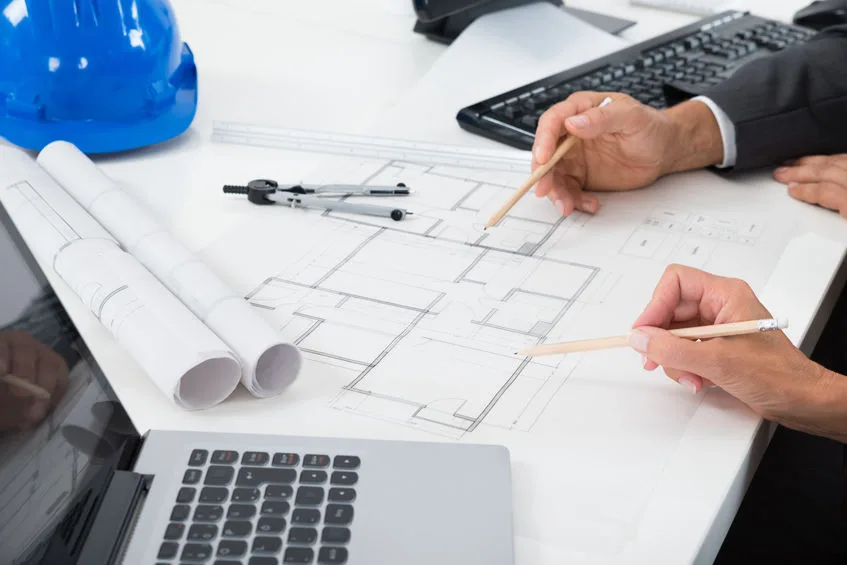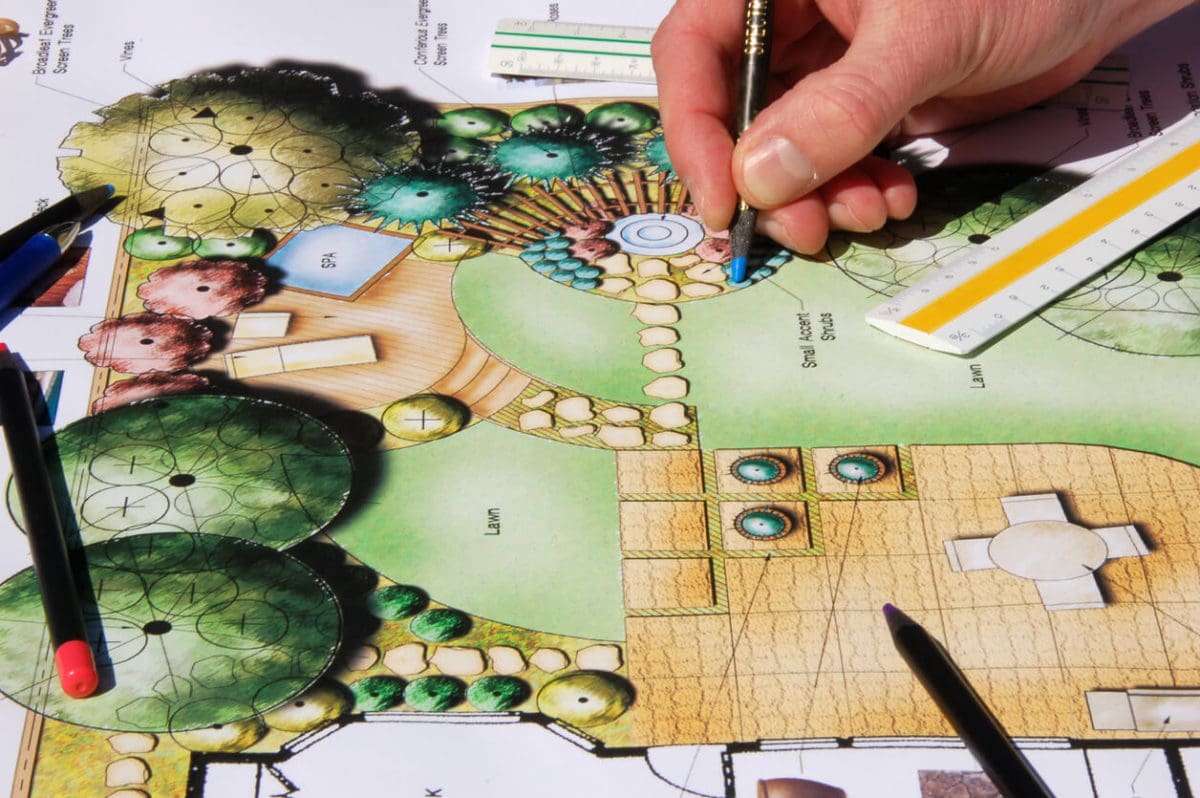Architect Workflow Improvement for More Efficient Project Delivery
Architect Workflow Improvement for More Efficient Project Delivery
Blog Article
Understanding the Diverse Occupation Paths Available for Aspiring Architect
As a hopeful Architect, you have a world of career paths awaiting you. Each path provides one-of-a-kind difficulties and possibilities to apply your imagination and technical expertise. Whether you're attracted to conventional style or the subtleties of sustainable layout, there's a niche that straightens with your interests. Recognizing these diverse options can shape your specialist journey, however which instructions will you pick to check out initially?
Traditional Architecture: Creating Frameworks and buildings
Conventional design concentrates on developing buildings and structures that blend performance with visual charm. As you discover this area, you'll value the complex equilibrium between form and purpose. You'll learn to attract inspiration from historical designs, including components like proportion, materials, and craftsmanship. Your designs can reflect cultural heritage, showcasing neighborhood practices while satisfying modern requirements.
You'll develop abilities in preparing, model-making, and website evaluation, enabling you to imagine and connect your concepts properly. Involving with clients, you'll require to comprehend their vision and convert it into viable layouts.
Additionally, developing codes and sustainability methods are vital in your job, guaranteeing your structures are eco pleasant and safe. As you grow in your career, you'll locate chances in property, commercial, and even reconstruction jobs, each offering distinct obstacles. Accepting traditional architecture leads the way for a meeting occupation that admires the past while shaping the future.
Urban Preparation: Shaping Neighborhoods and Public Spaces
As a hopeful Architect, you can play a necessary function as a metropolitan planner, changing how neighborhoods operate and engage. By utilizing area interaction strategies, you'll guarantee that residents have a voice fit their atmosphere. And also, integrating lasting layout principles will certainly aid create areas that not just satisfy today's demands but likewise shield the future.
Duty of Urban Planners
While many could assume of engineers as the single enthusiasts behind buildings, urban organizers play a necessary function in forming the wider landscape of neighborhoods and public spaces. By collaborating with different stakeholders, you'll assist create parks, transportation systems, and residential locations that promote social interaction and accessibility. Your knowledge in spatial design and area dynamics enables you to visualize future growth while maintaining cultural heritage.
Neighborhood Involvement Methods
Reliable community engagement strategies are vital for city coordinators to assure that the voices of citizens are heard and valued in the planning process. To cultivate significant discussion, you must prioritize open discussion forums and workshops where community participants can reveal their ideas and issues. Usage surveys and social media sites to reach a wider target market, guaranteeing varied perspectives are included. Collaborating with regional companies can boost trust and promote much deeper links. It's essential to provide clear info regarding suggested projects and decision-making procedures, permitting locals to really feel informed and encouraged. By proactively listening and incorporating responses, you'll develop spaces that show the neighborhood's needs, inevitably causing more sustainable and successful city atmospheres. Welcome transparency and constant discussion for long-term influence.
Lasting Layout Concepts
When creating city spaces, incorporating lasting layout principles is vital for developing settings that prosper both environmentally and socially. You need to begin by concentrating on energy performance, utilizing products that minimize waste and promote recycling. Take into consideration incorporating eco-friendly areas, like yards and parks, to improve biodiversity and boost air high quality. Promoting walkability and public transport can decrease reliance on automobiles, fostering a much healthier neighborhood.
Designing with water preservation in mind is likewise key-- consider rainfall gardens and permeable surface areas to handle stormwater. Including community participants during the planning procedure assurances that the areas you develop satisfy their demands and encourage social interaction. By accepting these principles, you'll contribute to vivid, sustainable metropolitan landscapes that benefit every person.

Landscape Style: Producing Lasting Outside Atmospheres
As you check out landscape design, you'll uncover necessary style concepts that create gorgeous and useful outdoor rooms. Sustainable techniques play a vital role in ensuring these settings flourish while lessening ecological impact. Plus, you'll discover a selection of career chances that allow you to make a real difference in exactly how people connect with nature.
Layout Principles in Landscape
Recognizing design concepts in landscape style is important for producing lasting outdoor environments that integrate with nature. You'll require to ponder elements like equilibrium, scale, and percentage to assure your styles feel natural and welcoming. In addition, pay attention to seasonal adjustments, making with products that match the environments year-round.
Sustainable Practices Review
Lasting practices in landscape architecture not only concentrate on appearances but likewise prioritize ecological health and wellness and source preservation. By incorporating native plants, you boost biodiversity and lower the demand for chemical fertilizers and pesticides. Carrying out effective irrigation systems assists conserve water and reduces drainage, securing neighboring ecological communities. You can make areas that advertise soil health, such as practicing and utilizing organic materials permaculture concepts. Furthermore, including green infrastructure, like rainfall yards and permeable pavements, aids in stormwater monitoring and lowers metropolitan warmth. When you produce outside atmospheres with sustainability in mind, you add to a much healthier earth and supply rooms that promote community link. Ultimately, these practices assure your designs benefit both individuals and the environment for many years to come.
Job Opportunities Expedition
With a strong foundation in lasting techniques, landscape architecture uses a variety of occupation courses that allow you to make a significant influence on the environment. You could blog here function as a landscape developer, creating cosmetically pleasing and functional exterior rooms, or specialize in environmental repair, aiding to revitalize damaged ecosystems. Urban planners frequently collaborate with landscape architects to create eco-friendly spaces in urban setups, boosting city livability. If you're passionate concerning education and learning, think about becoming a landscape design educator, inspiring future generations. In addition, you may deal with nonprofits concentrated on ecological sustainability or participate in research to introduce brand-new methods. Each course not only shapes stunning settings but additionally fosters a healthier world for future generations.
Sustainable Design: Concentrating on Eco-Friendly Practices
As you discover your profession in style, accepting green methods can establish you apart in an affordable area. Sustainable layout concentrates on producing buildings that reduce ecological influence while improving resident wellness. By including sustainable materials, energy-efficient systems, and sustainable building strategies, you'll contribute to a greener future.
Start by great post to read acquiring understanding of eco-friendly accreditations like LEED or BREEAM, which can reinforce your credentials. Think about how natural light, air flow, and thermal effectiveness can maximize style. Collaborate with designers and environmental specialists to innovate remedies that decrease waste and save resources.
Don't forget the value of community participation-- interesting regional stakeholders can motivate layouts that harmonize with the environment. As clients progressively focus on sustainability, your experience in environment-friendly methods will certainly not only attract tasks yet likewise satisfy your interest for responsible architecture. Welcome this essential element of the occupation, and watch your profession prosper.
Historic Preservation: Safeguarding and Bring Back Cultural Heritage
While you begin on your architectural journey, think about the crucial duty of historic preservation in preserving our social heritage. This field concentrates on the protection and restoration of significant buildings, sites, and frameworks that inform the stories of our past. By participating in historical conservation, you'll assist guard the building heritage that forms community identity.
As a historical conservation Architect, you'll analyze historic significance and analyze the condition of structures. You'll work closely with chroniclers and guardians to assure authentic reconstruction strategies are employed. This profession course permits you to mix creative thinking with research study, enabling you to develop solutions that appreciate original products and craftsmanship.
Your job not only contributes to sustainability by reusing existing buildings yet likewise cultivates a feeling of satisfaction within communities. Welcoming this course will certainly help you become a guardian of background, protecting the tales and visual appeals that enhance our lives.
Inside Architecture: Enhancing Indoor Spaces
Historic preservation and indoor design both share a dedication to enhancing the developed atmosphere, yet they concentrate on various elements. While historical preservation emphasizes keeping a structure's cultural and historic value, interior design nos in on enhancing interior spaces for capability and aesthetics.
As a hopeful Architect, you'll locate that indoor design enables you to mix creative thinking with technical skills. You'll design areas Click Here that not only look good however also advertise comfort and performance. This field involves recognizing exactly how light, color, and products engage within an area, affecting state of mind and use.
You'll deal with different tasks, from property homes to commercial offices, making certain that each setting meets the needs of its residents. By focusing on user experience, you can transform interiors right into practical and inspiring areas, making a significant influence on exactly how people communicate with their surroundings. Welcome the opportunity to boost indoor atmospheres and shape the means individuals live and function.
Industrial Style: Merging Functionality With Visual Appeals
Commercial style plays a crucial duty in creating items that flawlessly mix aesthetics with capability, making certain that what you make use of daily is not just visually appealing but additionally functional. As an ambitious Architect, you can involve on your own in this area, focusing on making every little thing from furnishings to customer electronics. Your work involves recognizing user requirements, materials, and manufacturing procedures, allowing you to create ingenious services that improve day-to-day experiences.
In industrial layout, you'll commonly collaborate with manufacturers, online marketers, and designers, making certain that your layouts are not only beautiful yet also viable. You'll learn to stabilize type and feature, focusing on functionality without sacrificing design. By refining your abilities in mapping out, 3D modeling, and prototyping, you'll be well-equipped to bring your concepts to life. This career path provides a vibrant setting where imagination fulfills practicality, making it a gratifying selection for designers curious about forming the products of tomorrow.
Frequently Asked Concerns
What Educational Certifications Do I Need to Become an Architect?
To end up being an engineer, you'll require an expert degree in architecture, normally a Bachelor's or Master's. Additionally, you'll have to complete a teaching fellowship and pass the Architect Enrollment Evaluation to practice legally.
Are There Qualification Requirements for Different Building Career Paths?
Yes, there're accreditation requirements for different architectural paths. Architect. You'll need to pass tests, full teaching fellowships, and occasionally go after specialized training, depending upon your selected emphasis, like landscape style, urban design, or historic preservation
What Software Program Abilities Are Crucial for Architects Today?

Just How Can I Gain Practical Experience While Studying Architecture?
You can gain useful experience by interning at architectural firms, joining design competitions, offering for neighborhood jobs, or working together with classmates on real-world projects. These opportunities boost your skills and build useful links in the market.
What Work Opportunities Exist Outside Traditional Style Firms?
You can check out different task possibilities outside typical architecture companies, like city planning, interior decoration, landscape design, building and construction management, realty growth, and even functions in sustainability consulting. Each offers unique difficulties and rewards.
Whether you're attracted to typical style or the subtleties of sustainable design, there's a niche that aligns with your interests.When creating metropolitan spaces, incorporating sustainable layout principles is critical for creating environments that flourish both environmentally and socially.As you explore landscape architecture, you'll find necessary layout principles that develop lovely and useful outside rooms.Recognizing style principles in landscape architecture is vital for creating lasting outdoor settings that integrate with nature.In industrial style, you'll often team up with makers, engineers, and marketing professionals, making sure that your layouts are not just attractive but also viable.
Report this page